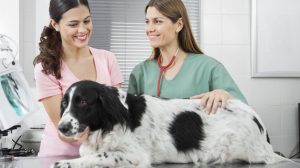Usually, you don’t need to worry too much about Sheltie’s health – the Shetland Sheepdog is known to be relatively hardy. Responsible breeders also rule out possible hereditary diseases as far as possible. Nevertheless, there are things you can do yourself to increase your Sheltie’s well-being and life expectancy.

Good breeding is essential for Sheltie’s health on the one hand and species-appropriate nutrition and care on the other. Due to its small body size, the Shetland Sheepdog tends to be overweight, leading to various health problems. His long coat should be brushed once a week or even daily during the moult. The following tips reveal what else you can consider ensuring that your Sheltie is doing well.
Sheltie’s health starts with breeding.
Breeding responsibly can increase the chances of your Sheltie staying healthy for as long as possible. The well-being of their protégés is essential to good dog breeders, and they have regular, extensive health examinations carried out on the parents and the puppies to rule out possible hereditary diseases. In addition, the little Shelties grow up with reputable breeders in a loving, stimulating and dog-friendly environment. They get to know everyday noises, strangers, other dogs and possibly other pets to be well socialized later on. Then they are less skittish and less aggressive, and it is easier for them to trust their new owners. This reduces the risk of behavioural problems.
Possible hereditary diseases in the Shetland Sheepdog
Like many small dog breeds, Shelties are also prone to what is known as patellar luxation, a dislocation of the kneecap. This condition varies in severity – sometimes it can be treated with massage, but in severe cases, surgery is required. Symptoms of a patellar dislocation include limping and flexing of the affected leg. Otherwise more of a problem for large dog breeds; Sheltie’s health can also be affected by hip dysplasia (HD). A hip deformity causes excessive wear and tear on the hip joint, resulting in arthritis. The disease becomes noticeable, for example, through a hopping gait or a frightened hesitation on the landing. If recognized early, hip dysplasia can be treated with canine physiotherapy, heat and joint-gentle exercise, and, if necessary, weight loss. Surgery can also help later. Patellar luxation and HD usually affect middle-aged dogs.
Young members of the small herding dog breed can get a skin disease called Collienosis (lupus erythematosus). Causes are partly genetic but can also result from too much sun exposure or trauma. The face of affected dogs shows hair loss, redness, scales and crusting. Medications can help relieve the rash, and diet and supplements such as vitamin E and essential fatty acids can help reduce the condition. Even as a puppy, your Sheltie can suffer from Collie Eye Anomaly (CEA), various eye defects such as twisted retinal vessels, dilated pupils, malformations or a retinal detachment. However, good Sheltie breeders are aware of these health hazards and will perform eye exams on their puppies. Before you sign the purchase contract, he will inform you about a possible positive result.
Increasing Sheltie Life Expectancy: Health Tips
Sheltie’s life expectancy averages 12 to 15 years. For your Shetland Sheepdog to live as long as possible, you should pay attention to its diet and make sure that it does not become overweight. If you can’t feel your four-legged friend’s ribs on the sides, it’s time to reduce the food portions and bring a little more movement into Sheltie’s life.
The fluffy herding dogs are brilliant and love being challenged physically and mentally. Shelties, for example, often enjoy agility, but they also want obedience training and can be trained to pass the Companion Dog Test.







